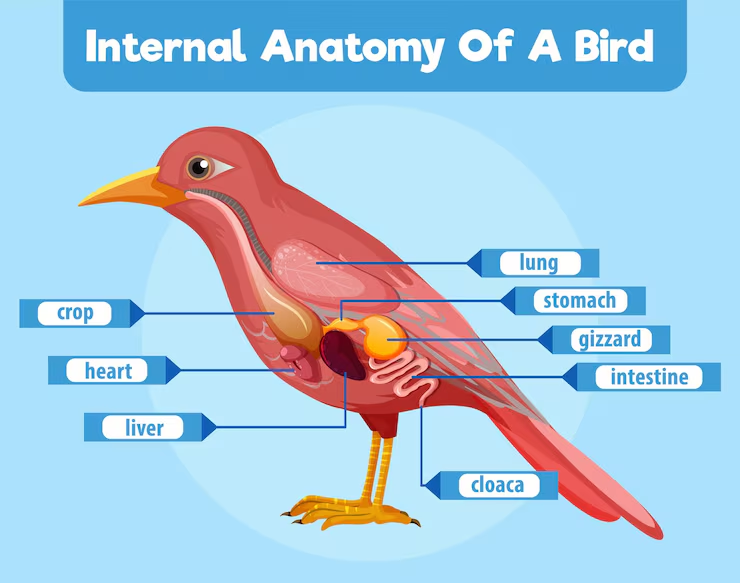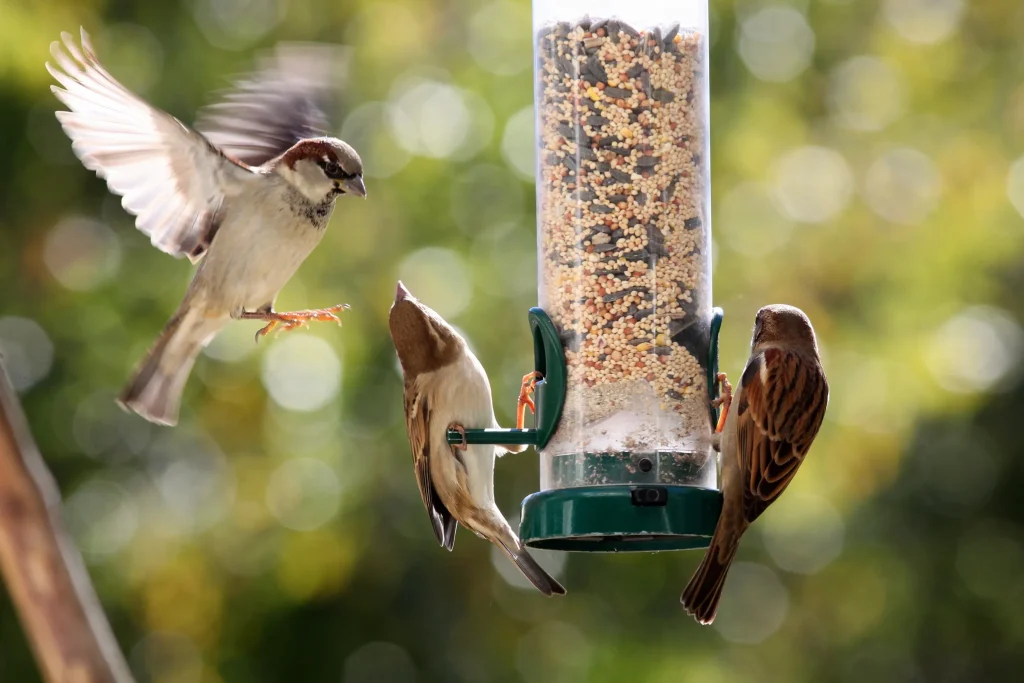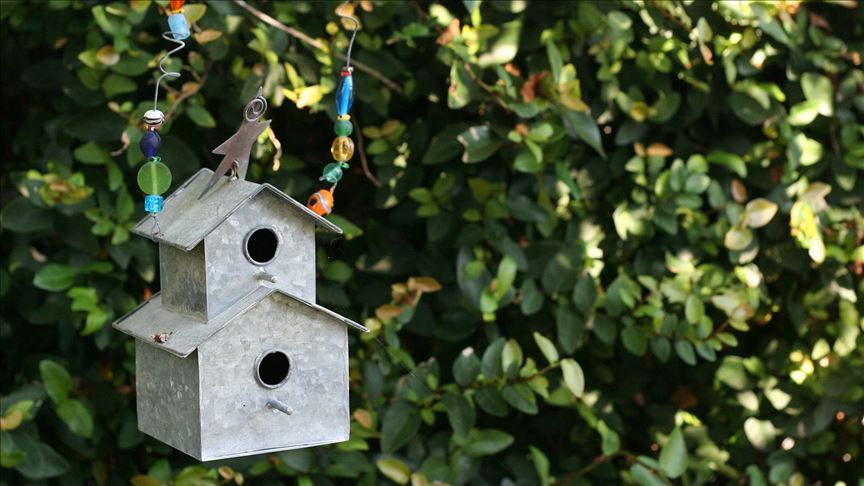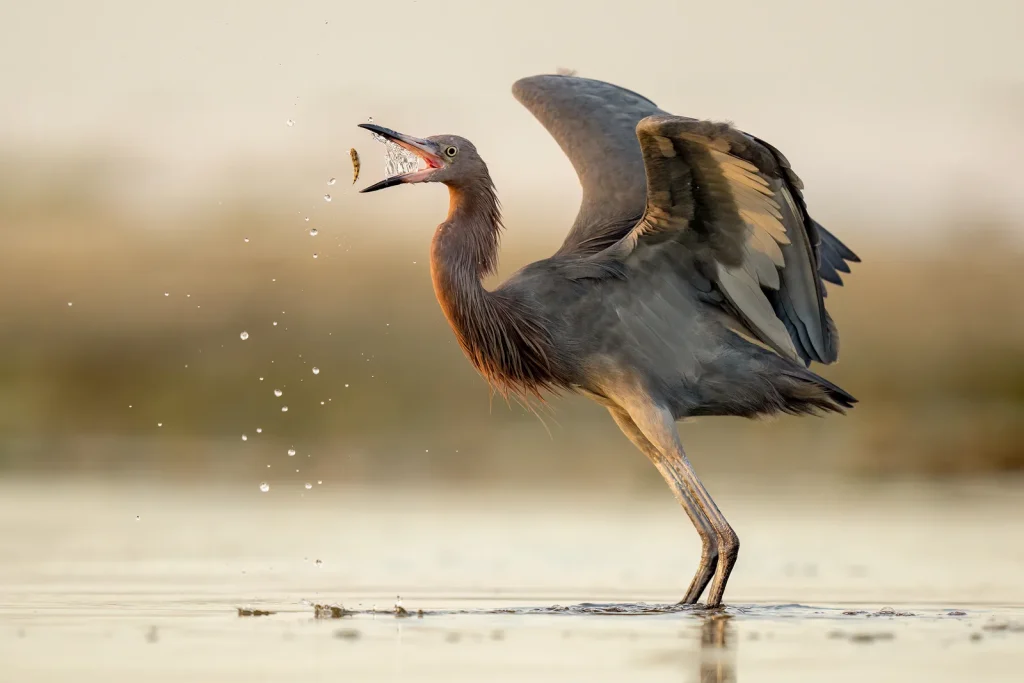Discovering a bird with an injured leg can tug at your heartstrings and spark a desire to help. You might feel a mix of empathy and curiosity, wondering what steps you can take to ease the bird’s discomfort.
This guide is here to walk you through the process, offering clear and simple steps to ensure the bird receives the care it needs. You’ll find practical advice, from assessing the injury to providing the right treatment, all aimed at empowering you to make a difference.
As you read on, you’ll gain the confidence and knowledge to take immediate action, transforming concern into compassion. Dive in to learn how you can become a compassionate caregiver to our feathered friends in need.
Identifying Leg Injuries
Birds can hurt their legs in many ways. It is important to find out if a bird has a leg injury. Early care helps the bird heal faster.
Check the bird’s leg carefully. Look for signs that show pain or damage. Knowing what to look for makes treatment easier.
Common Signs Of Injury
Birds with injured legs may act differently. Watch for changes in movement or appearance. These signs help you spot an injury quickly.
- The bird limps or does not use the leg
- Swelling or redness on the leg
- Bird holds leg in an unusual position
- Bird shows pain when you touch the leg
- Feathers around the leg look ruffled or damaged
- Bird avoids standing or perching on the injured leg
Assessing Severity
Not all leg injuries are the same. Some are minor, and others need urgent care. Check how bad the injury looks before you act.
Look for deep cuts, broken bones, or bleeding. Also, notice if the bird is very weak or in shock. These signs mean you must get help fast.
- Minor injuries: small cuts, slight swelling, mild limping
- Moderate injuries: large swelling, bruises, difficulty standing
- Severe injuries: broken bones, open wounds, heavy bleeding
- Emergency signs: loss of consciousness, severe pain, inability to move

Credit: www.reddit.com
Initial Care Steps
Taking care of a bird with an injured leg needs calm and quick action. Proper first steps help the bird heal faster.
Learn how to calm the bird and create a safe space for it. These steps protect the bird and reduce stress.
Calming The Bird
Birds get scared easily when hurt. Speak softly to keep the bird calm. Avoid sudden moves or loud noises.
Hold the bird gently but firmly to stop it from hurting itself more. Use a towel to wrap the bird if needed.
- Talk in a quiet, soothing voice
- Move slowly around the bird
- Use a soft cloth to gently hold the bird
- Avoid loud sounds and quick motions
Setting Up A Safe Space
Give the bird a quiet area to rest. The space should be warm and free from other animals or pets.
Use a small box or cage lined with soft cloth. Keep food and water nearby but easy for the bird to reach.
- Choose a small, quiet room
- Place the bird in a box or cage
- Line the space with soft towels or cloth
- Keep food and water close but not crowded
- Avoid direct sunlight and drafts
Cleaning And Dressing Wounds
Treating a bird with an injured leg needs careful cleaning and dressing. This helps stop infection and speed healing.
Use gentle methods and proper materials to keep the wound safe and clean. This guide shows how to clean and apply bandages correctly.
Proper Cleaning Techniques
Clean the wound carefully to remove dirt and germs. Use clean water or a mild antiseptic solution made for birds.
- Wear disposable gloves to avoid infection.
- Rinse the wound gently with warm water.
- Use a soft cloth or cotton to wipe away dirt.
- Apply antiseptic solution with a clean dropper or swab.
- Do not use harsh chemicals like hydrogen peroxide directly on the wound.
- Pat the area dry with a sterile gauze pad.
Applying Bandages
Cover the cleaned wound to protect it from dirt and further injury. Use soft, breathable materials to avoid hurting the bird.
| Material | Purpose | Notes |
|---|---|---|
| Sterile gauze pad | Covers the wound | Change daily or if dirty |
| Soft cotton roll | Provides cushioning | Wrap gently around the leg |
| Self-adhesive bandage | Keeps dressing in place | Do not wrap too tight to avoid cutting off circulation |
| Medical tape | Secures bandage ends | Use minimal tape to avoid irritation |

Credit: www.reddit.com
Immobilizing The Leg
Immobilizing an injured bird’s leg helps it heal properly. It stops the leg from moving and causing more damage.
You can use splints or slings to keep the leg still. Each method fits different injury types and bird sizes.
Using Splints
Splints hold the leg straight and protect broken bones. They help the bone heal in the right position.
To make a splint, use light but firm materials like popsicle sticks or small wooden strips. Wrap them gently around the leg.
- Place padding like cotton or gauze first to avoid skin cuts.
- Attach splints on both sides of the leg for stability.
- Use medical tape or bandages to hold the splints in place.
- Make sure the bird can still move its toes slightly.
- Check the splint daily for tightness or swelling.
When To Use Slings
Slings support the leg without fully straightening it. They are good for soft tissue injuries or sprains.
Use a sling when the bird needs less pressure on the leg but still needs support to avoid pain.
- Make a sling from a soft cloth or bandage.
- Wrap it gently under the leg to hold it up.
- Secure the sling around the bird’s body or wing.
- Adjust the sling so the leg rests comfortably.
- Check often to prevent tightness or discomfort.
Providing Pain Relief
Treating a bird with an injured leg requires careful attention to pain relief. Pain management helps the bird heal faster and stay calm.
Use safe methods to reduce pain and avoid stress. Always consult a vet before giving any medicine to your bird.
Safe Medications
Some medications help ease pain in birds. Only use those approved by a vet. Never give human medicine unless directed.
Common safe medicines include painkillers like meloxicam or tramadol. These drugs reduce inflammation and pain.
- Meloxicam: reduces swelling and pain
- Tramadol: acts as a mild painkiller
- Follow dosage instructions carefully
- Use only under veterinary advice
Natural Remedies
You can also try natural ways to comfort your bird. These methods support healing and reduce discomfort safely.
Keep the bird warm and quiet. Gentle massage around the leg, not on the injury, may help blood flow.
- Warm compresses to ease stiffness
- Quiet space to reduce stress
- Soft bedding for comfort
- Proper nutrition to support healing
Feeding And Hydration Tips
Taking care of a bird with an injured leg needs special attention to feeding and water. Proper nutrition helps the bird heal faster. Keeping the bird hydrated supports its overall health.
Here are simple ways to make sure your bird gets the right food and enough water during recovery.
Nutritional Support
Offer soft, easy-to-eat foods that provide energy and nutrients. Avoid hard seeds that require too much effort to crack. Include fruits and vegetables rich in vitamins.
- Provide soaked seeds or pellets for easy eating
- Offer small pieces of fresh fruits like apple or banana
- Include leafy greens such as spinach or kale
- Add a source of protein like cooked egg or mealworms
- Feed smaller amounts more often to encourage eating
Ensuring Water Intake
Water is vital for healing and digestion. Make sure the bird drinks enough by offering fresh water daily. Clean the water container to prevent germs.
| Tip | Details |
|---|---|
| Use shallow water dishes | Helps the bird drink easily without risk of drowning |
| Place multiple water sources | Encourages the bird to drink wherever it feels comfortable |
| Add water-rich foods | Fruits and vegetables also help keep the bird hydrated |
| Check water temperature | Room temperature water is best for drinking |
| Change water daily | Keeps water clean and fresh |
When To See A Vet
Injuries to a bird’s leg can be serious. Knowing when to get professional help is important. A vet can provide care to avoid further damage.
Some signs mean you should take your bird to a vet quickly. Early treatment can improve recovery and reduce pain.
Signs Of Complications
Watch your bird closely for these signs. They show the injury may be worse or infected.
- Swelling that gets bigger or does not go down
- Open wounds with pus or bad smell
- Bird stops eating or drinking
- Leg stays cold or pale
- Bird shows strong pain or cries when touched
- Leg is bent at an odd angle or looks broken
- Bird cannot stand or use the leg at all
Preparing For The Visit
Before going to the vet, gather important information. This helps the vet give the best care.
| What to Bring | Why It Helps |
| Bird’s medical history | Shows past health issues or allergies |
| Details about the injury | Helps vet understand how it happened |
| Photos of the leg | Shows changes or swelling |
| Safe carrier | Keeps bird calm and secure during transport |
| Contact info of previous vet | For quick access to records if needed |
Preventing Future Injuries
Taking care of a bird with an injured leg is important. You want to help it heal and stop new injuries. Setting up a safe space and checking the bird’s health often can help a lot.
Preventing injuries keeps your bird happy and healthy. It also helps you avoid trips to the vet.
Safe Environment Setup
Create a safe area for your bird to live and heal. Remove sharp objects or things it can trip over. Make the cage or room easy to move in without obstacles.
Use soft bedding and avoid slippery surfaces. This helps protect the bird’s leg and stops falls. Make sure perches are low and sturdy.
- Clear away sharp or rough objects
- Use soft, non-slip surfaces
- Place low and strong perches
- Keep food and water easy to reach
- Limit space to avoid too much flying
Regular Health Checks
Check your bird’s legs and body every day. Look for swelling, cuts, or signs of pain. Early detection can stop a small problem from getting worse.
Watch how your bird walks and moves. If it limps or favors one leg, get help from a vet. Keep a health journal to track changes and treatments.
- Look for swelling or redness
- Notice changes in walking or perching
- Keep a health diary
- Visit the vet if signs get worse
- Follow treatment plans closely

Credit: www.reddit.com
Frequently Asked Questions
How Can I Safely Handle A Bird With A Broken Leg?
Gently wrap the bird in a soft cloth to prevent flapping. Support its body and avoid touching the injured leg. Handle with care to reduce stress and avoid further injury. Use gloves if necessary to protect yourself and the bird.
What Are The First Steps To Treat An Injured Bird Leg?
First, immobilize the leg using a soft splint or bandage. Clean any wounds with saline solution. Keep the bird warm and quiet. Seek immediate veterinary care for proper diagnosis and treatment.
When Should I Take An Injured Bird To A Vet?
If the bird shows severe pain, bleeding, or inability to perch, visit a vet immediately. Prompt professional care ensures proper healing. Delaying treatment may worsen the injury or cause permanent damage.
Can I Use Household Items For Bird Leg Splints?
Yes, use lightweight materials like popsicle sticks or tongue depressors. Secure gently with medical tape or soft cloth strips. Avoid tight wrapping to prevent circulation issues. Always consult a vet for guidance on splinting.
Conclusion
Treating a bird with an injured leg takes patience and care. Act quickly to prevent more damage. Keep the bird calm and safe during treatment. Clean wounds gently and use proper bandages. Monitor the bird’s progress every day. Seek help from a vet if needed.
Small steps help the bird heal well. Your care makes a big difference. Helping injured birds shows kindness and respect for nature. Stay calm and follow simple steps for the best results.





